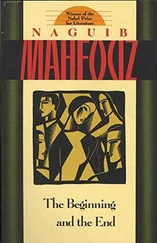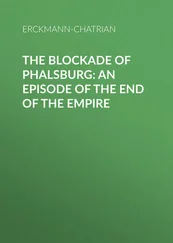Chalmers Johnson - The Sorrows of Empire - Militarism, Secrecy, and the End of the Republic
Здесь есть возможность читать онлайн «Chalmers Johnson - The Sorrows of Empire - Militarism, Secrecy, and the End of the Republic» весь текст электронной книги совершенно бесплатно (целиком полную версию без сокращений). В некоторых случаях можно слушать аудио, скачать через торрент в формате fb2 и присутствует краткое содержание. Год выпуска: 2003, ISBN: 2003, Издательство: Macmillan, Жанр: Старинная литература, на английском языке. Описание произведения, (предисловие) а так же отзывы посетителей доступны на портале библиотеки ЛибКат.
- Название:The Sorrows of Empire: Militarism, Secrecy, and the End of the Republic
- Автор:
- Издательство:Macmillan
- Жанр:
- Год:2003
- ISBN:9780805077971
- Рейтинг книги:4 / 5. Голосов: 1
-
Избранное:Добавить в избранное
- Отзывы:
-
Ваша оценка:
- 80
- 1
- 2
- 3
- 4
- 5
The Sorrows of Empire: Militarism, Secrecy, and the End of the Republic: краткое содержание, описание и аннотация
Предлагаем к чтению аннотацию, описание, краткое содержание или предисловие (зависит от того, что написал сам автор книги «The Sorrows of Empire: Militarism, Secrecy, and the End of the Republic»). Если вы не нашли необходимую информацию о книге — напишите в комментариях, мы постараемся отыскать её.
The Sorrows of Empire: Militarism, Secrecy, and the End of the Republic — читать онлайн бесплатно полную книгу (весь текст) целиком
Ниже представлен текст книги, разбитый по страницам. Система сохранения места последней прочитанной страницы, позволяет с удобством читать онлайн бесплатно книгу «The Sorrows of Empire: Militarism, Secrecy, and the End of the Republic», без необходимости каждый раз заново искать на чём Вы остановились. Поставьте закладку, и сможете в любой момент перейти на страницу, на которой закончили чтение.
Интервал:
Закладка:
The Saudi government built Eskan Village in 1983 to provide housing for one of Saudi Arabia’s many nomadic Bedouin tribes, who decided that they preferred living in their traditional tents in the desert. The housing complex was never occupied. It is actually a small, self-contained town consisting of 836 “villas” and thirty-seven high-rise towers. From the Gulf War to the Khobar Towers bombing, Eskan Village was strictly a housing estate for American military personnel working in the Saudi capital or at Riyadh Air Force Base. From 1996 through Gulf War II, it became home and work all wrapped in one. The average villa—five bedrooms, three baths, a living room, and a kitchen—comes fully equipped with a stove, TV, and washing machine. Only villas housing female personnel have clothes driers (in deference to Saudi sensitivities about seeing female underwear flapping on an outdoor clothesline). Eskan Village has become a completely American community, with dining halls, medical and dental clinics, a basketball court, volleyball courts, a miniature golf course, a “Pizza Inn,” a Chinese fast-food restaurant, and a “club” with swimming pool. 30Liquor of any sort, however, is prohibited.
The amenities and scope of Eskan Village paled in comparison with those of Prince Sultan Air Base, for over a decade the largest military facility used by the United States in the Persian Gulf area, approximately the same size as the entire country of Bahrain and a mere 620 miles from Baghdad. The government of Saudi Arabia planned Prince Sultan prior to the first Gulf War but had built only the massive 15,000-feet-long runway plus taxiways and parking aprons. There were as yet no buildings in October 1990, when the U.S. Air Force dispatched one of its 435-person Red Horse squadrons (“Rapid Engineer Deployable Heavy Operational Repair Squadron Engineers”) from Aviano Air Force Base in Italy to make the place operational. Created during the Vietnam War, Red Horse squadrons, sometimes used to disable enemy airfields, as they did in Iraq during the Gulf War, specialize in making repairs to airfields during combat. They are fully armed. At Prince Sultan they worked throughout the winter of 1990 on more than twenty-five major projects, at a cost of more than $14.6 million. By January 1991, Prince Sultan Air Base started to receive aircraft, and by the beginning of the Gulf War it held some 4,900 air force personnel and was capable of housing, servicing, and arming five fighter squadrons of aircraft and their supporting personnel (a typical American squadron consists of twenty-four aircraft). With the end of the fighting in 1991, it was allowed to go fallow until the Khobar Towers bombing put it back on the map.
Prince Sultan, surrounded by flat desert with open lines of fire, was a perfect spot to “hide” the American presence. In addition, the air force assigned 10 percent of the 6,000 troops based there after 1996 to “perimeter security.” Even so, F-15s and F-16s on takeoff were under orders to climb as fast as possible to avoid potential attack by surface-to-air missiles. The American troops who served on ninety-day tours almost never left the base. The transfer of U.S. operations to Prince Sultan cost some $500 million. Both before and during the second Iraq war, it was the main base for American surveillance operations using AWACs (airborne warning and control) aircraft and U-2 spy planes.
From the summer of 1996 to 2002, construction at Prince Sultan was continuous. In 1997, the Saudi Ministry of Defense and Aviation awarded Northrop Aviation’s Electronic Sensors and Systems Division a contract worth $60.7 million to set up and integrate new air traffic control, navigation, meteorological, and communications systems. In early 1999, the troops, who had been living in air-conditioned tents, moved into a new 4,257-bed housing facility two miles from the base. The Saudi government paid $112 million for it; hence it remained Saudi government property even when run and maintained by the U.S. Air Force. Facilities included community dining halls with names like Camel Lot and Mirage, a base theater, a gymnasium, a recreation center, an outdoor swimming pool permanently cooled to 82 degrees (the air temperature at Prince Sultan is normally in the range of 110 to 115 degrees Fahrenheit), and the Prince Sultan Health Center (cost $5.87 million), which Prince Sultan himself dedicated on June 22, 1999. The total cost of the air base, from its inception in the late 1980s, has been estimated at around $1.07 billion. In the years leading up to the second Iraq war, the air force flew a total of 286,000 missions from Prince Sultan and other Persian Gulf bases to enforce the no-fly zone in southern Iraq. The same operations for northern Iraq were launched from Incirlik Air Base in Turkey.
The major new military construction at Prince Sultan, completed just prior to the war in Afghanistan, was a Combined Air Operations Center (CAOC) with state-of-the-art command and control systems and a Joint Intelligence Center, including three different Internet networks—for unclassified, secret, and allied forces traffic. The air force dedicated the center in June 2001, and in October the Saudi government permitted its use in coordinating air operations against targets in Afghanistan. The hypersecret Air Force Communications Agency supervised its design and installation. The new CAOC at Prince Sultan coordinated air operations with new air bases the United States was just then building in Kuwait, Qatar, and the United Arab Emirates. But as the second Iraq war approached, it became unclear whether and for what functions the Saudi government would allow the Americans to use Prince Sultan, so the Pentagon promptly built an elaborate alternative air command center at al-Udeid Air Base in Qatar. 31
Typical of life in the spreading empire of bases in the oil lands, days at Prince Sultan were often spent swimming and watching football on TV when not working. Still, the isolation did not necessarily go down well with the troops. In one notorious instance, Lieutenant Colonel Martha McSally, the highest-ranking female pilot in the air force, took the Defense Department to court for requiring her to put on an abaya —the total body covering devout Saudi women wear in public—when off the base. This, she claimed, was an unconstitutional infringement of the rights of American women. She won (in Washington, DC), and Central Command withdrew the requirement. 32
The U.S. government has always understood that the presence of our forces in Saudi Arabia was a root cause of al-Qaeda’s terrorist activities against both the monarchy and American targets within and outside the country. Rather than move those forces promptly after 9/11, however, the Bush administration waited until it could disguise what it was doing under cover of normal military redeployments. On April 29, 2003, Defense Secretary Donald Rumsfeld and his Saudi counterpart, Prince Sultan bin Abdul Aziz, finally announced in Riyadh that the fall of Saddam Hussein meant that America’s military mission in the country was over and that “all combat forces” would be withdrawn. Even so, the Bush administration seemed to have delayed too long. On May 12,2003, terrorists attacked four walled and guarded compounds for foreigners in Riyadh, killing over thirty Americans and Saudis. Moreover, the United States is not actually leaving Prince Sultan or the country—it has retained a small maintenance unit at the air base and the Vinnell Corporation’s training of the Saudi National Guard continues. The U.S. withdrawal was announced with great fanfare on Saudi television, but it is unlikely that anyone believed that American imperialists had actually lost interest in the world’s richest oil-producing nation. As the English historian of imperialism Niall Ferguson observed in an interview with the New York Times, “From 1882 until 1922, the British promised the international community sixty-six times that they would leave Egypt, but they never did.” 33
Читать дальшеИнтервал:
Закладка:
Похожие книги на «The Sorrows of Empire: Militarism, Secrecy, and the End of the Republic»
Представляем Вашему вниманию похожие книги на «The Sorrows of Empire: Militarism, Secrecy, and the End of the Republic» списком для выбора. Мы отобрали схожую по названию и смыслу литературу в надежде предоставить читателям больше вариантов отыскать новые, интересные, ещё непрочитанные произведения.
Обсуждение, отзывы о книге «The Sorrows of Empire: Militarism, Secrecy, and the End of the Republic» и просто собственные мнения читателей. Оставьте ваши комментарии, напишите, что Вы думаете о произведении, его смысле или главных героях. Укажите что конкретно понравилось, а что нет, и почему Вы так считаете.











